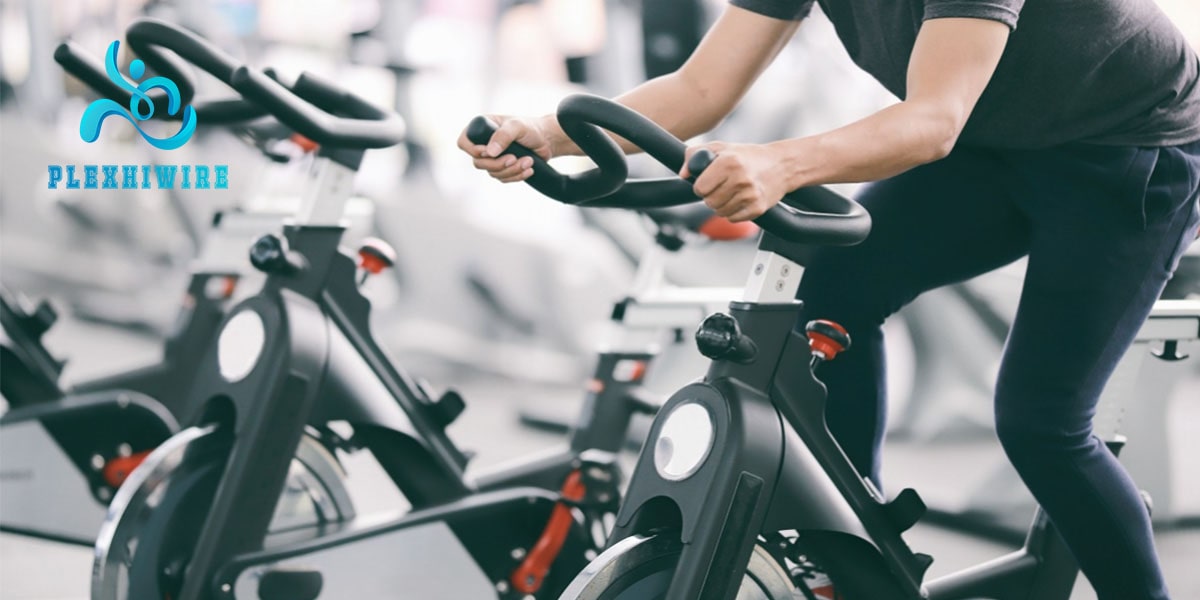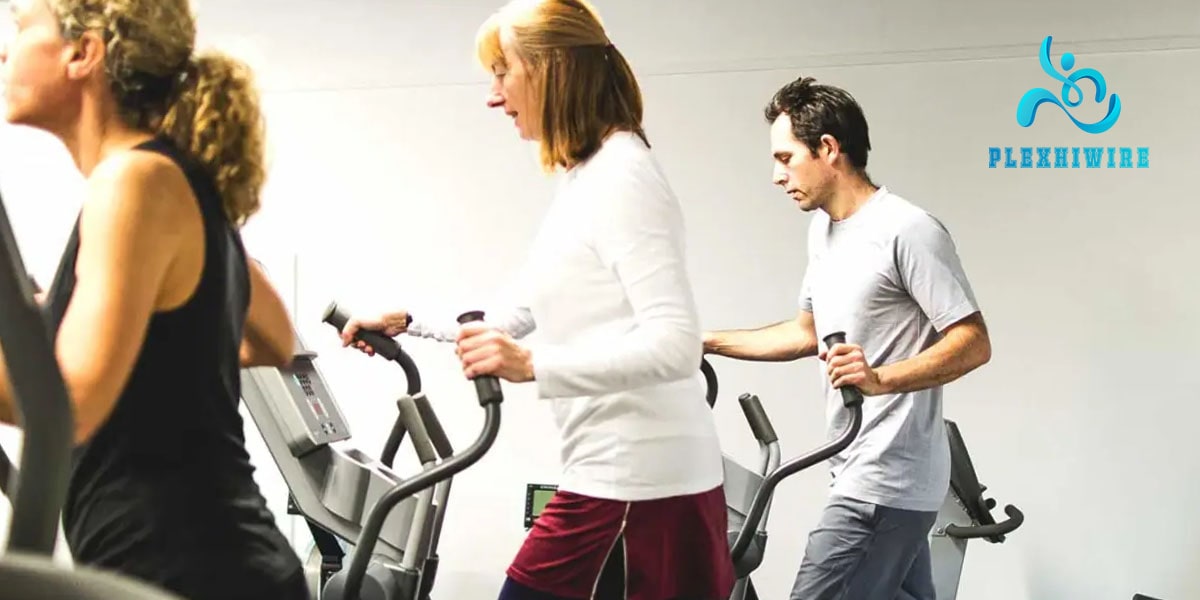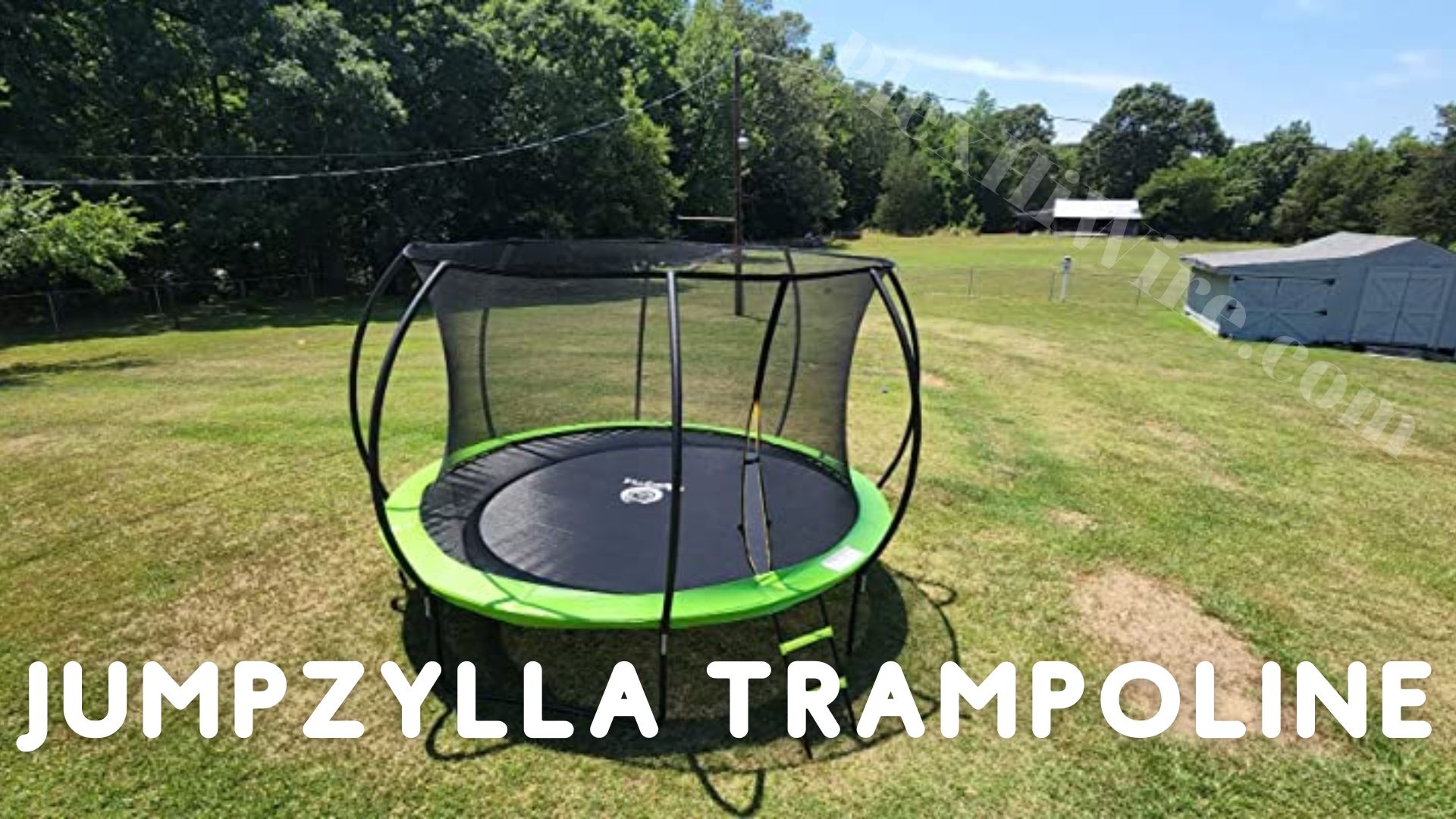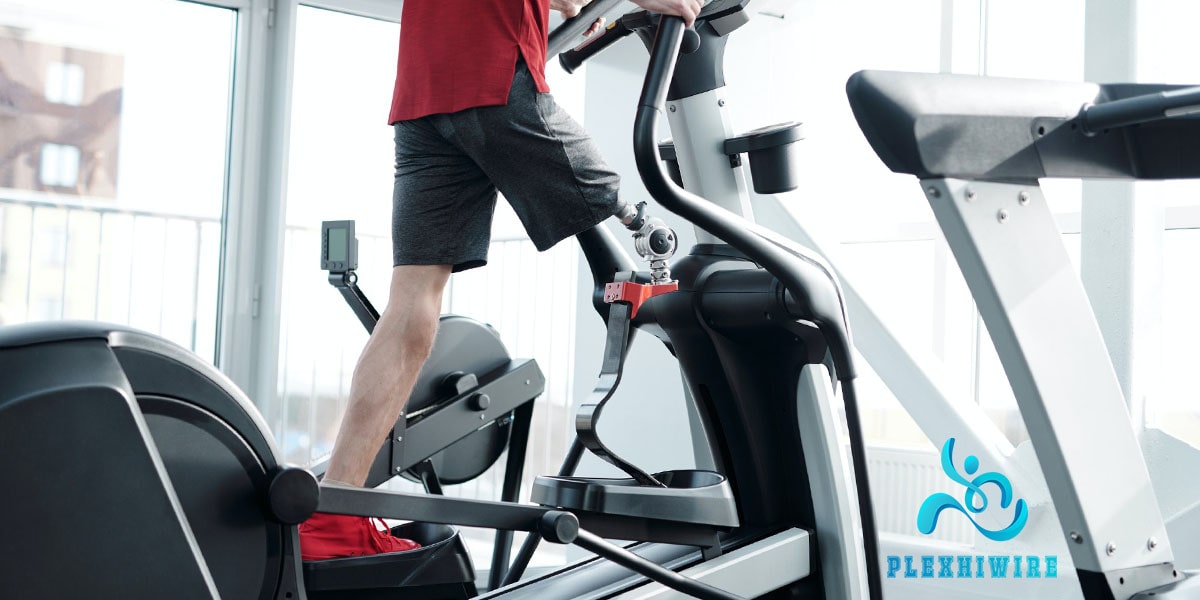Bike Versus Elliptical: Which One is Better For You?
The debate of bike versus elliptical has been around for years, with no clear winner in sight. Both have their pros and cons, and ultimately the decision comes down to personal preference. Here’s a look at both workout options to help you decide which is right for you.
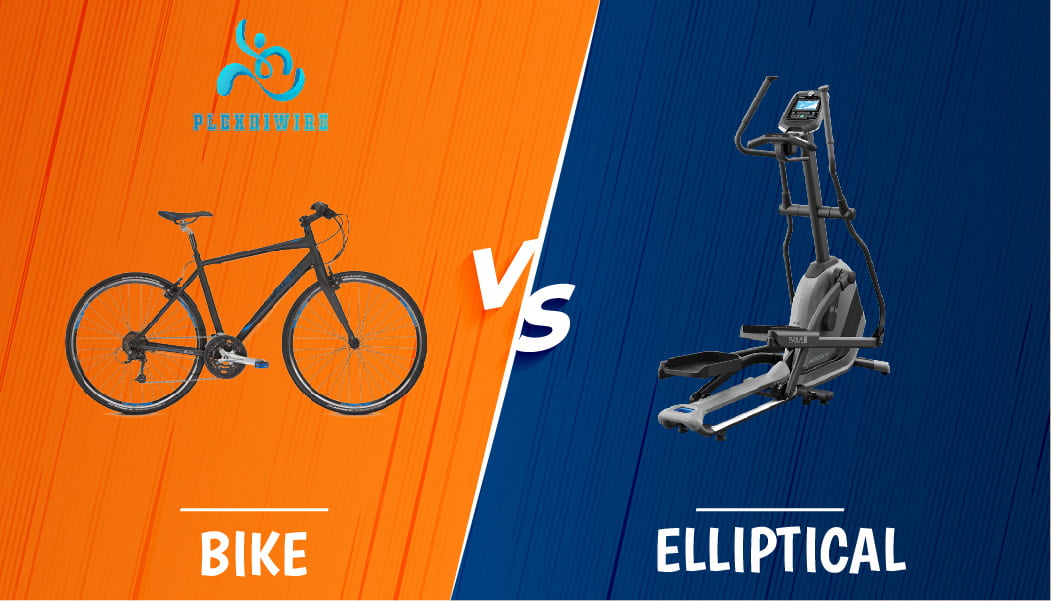
So, Bike Versus Elliptical: Which Is Better? It depends on your goals and preferences. If you’re looking for a low-impact workout, a bike may be the better option. If you’re looking for a more challenging workout, an elliptical may be the way to go. Let’s take a closer look at both options and see what works best for your needs.
- What Is An Elliptical Machine?
- How Does An Elliptical Work?
- What Are The Benefits Of An Elliptical?
- What Are The Disadvantages Of An Elliptical?
- What Is A Bike?
- How Does A Bike Work?
- What Are The Benefits Of A Bike?
- What Are The Disadvantages Of A Bike?
- Which Is Better For Weight Loss – Biking Or Elliptical Training?
- How Do They Compare In Terms Of Calorie Burn?
- What Muscles Does A Stationary Bike Work?
- What Are The Main Differences Between Biking And Elliptical Training?
- How To Work Out Safely And Avoid Injury
- FAQs
- Will the elliptical tone your butt?
- How does muscle recruitment differ between biking and elliptical training?
- How does joint impact differ between biking and elliptical training?
- How does intensity differ between biking and elliptical training?
- Which one is better for burning fat?
- Are there any risks associated with cycling or using an elliptical trainer excessively?
- Should I use a Bike or Elliptical if I have knee pain?
- Do you get a better workout by going faster on the elliptical or slower with more resistance?
- How does muscle recruitment differ between biking and elliptical training?
- How many calories can you burn in 30 minutes by biking or using an elliptical?
- Conclusion
What Is An Elliptical Machine?
An elliptical machine is a piece of fitness equipment that simulates walking or running. It is low-impact and can be used for both cardiovascular exercise and strength training. Elliptical machines are often found in gyms and health clubs, but they can also be purchased for home use.There are many benefits to using an elliptical machine.
First, it is a low-impact form of exercise, which means it is easy on the joints. This makes it ideal for people who are overweight or have joint problems. Second, elliptical machines provide a full-body workout. Most machines have arm levers that allow you to work your upper body as well as your lower body. Finally, elliptical machines are very versatile.
See more: Before You Buy an Elliptical Trainer
How Does An Elliptical Work?
An elliptical trainer or cross-trainer is a stationary exercise machine used to simulate stair climbing, walking, or running without causing excessive pressure to the joints. Ellipticals are considered low-impact aerobic exercises. Additionally, some elliptical trainers can be used with upper-body moving handles, which provide a more complete workout.
Most elliptical trainers have electronic displays that show theoretical calories burned, distance traveled, heart rate, and strides per minute. Some models also include preprogrammed workout routines. The stride length on an elliptical trainer is adjustable. A longer stride length simulates running or jogging, while a shorter stride length simulates walking. The resistance on an elliptical trainer is also adjustable.
What Are The Benefits Of An Elliptical?
Ellipticals offer a number of benefits, including:
Low impact: Ellipticals are easy on your joints, making them a great option for those with joint issues.
Full-body workout: Ellipticals provide a full-body workout, engaging your upper and lower body at the same time.
Cardio and strength: Ellipticals offer both cardio and strength benefits, making them a well-rounded workout option.
Weight loss: Ellipticals can help you burn calories and lose weight.
Improved coordination: The elliptical motion can help improve your coordination and balance.
What Are The Disadvantages Of An Elliptical?
While ellipticals offer many benefits, there are some disadvantages to consider, including:
High impact: Ellipticals are a high-impact exercise, which may not be ideal for those with joint issues.
Limited range of motion: The elliptical motion can be repetitive and may not provide a full range of motion.
Expensive: Ellipticals can be expensive, depending on the type and brand you choose.
What Is A Bike?
A bike is a piece of cardio equipment that provides a low-impact workout. Bikes are a great option for those who want an easy workout or are new to exercise. There are many different types of bikes on the market, so it’s important to find one that meets your needs.
A bike is a two-wheeled vehicle that is propelled by pedaling. Bicycles were introduced in the early 19th century and became increasingly popular worldwide in the late 20th century. Bicycles are an efficient means of transportation and offer many health benefits.
Bicycling is a low-impact form of exercise that can provide moderate to high levels of cardiovascular conditioning, depending on the intensity of the rider’s effort. In addition, bicycling can strengthen muscles, improve joint flexibility, and reduce stress levels. Regular bicycling can also help to reduce the risk of developing obesity, heart disease, stroke, and diabetes.
Bicycles are one of the most popular forms of transportation around the world, and for good reason. They’re relatively inexpensive, easy to operate, and can be used for a variety of purposes, from commuting to exercise. But how do bikes work?
How Does A Bike Work?
At its most basic level, a bike is a machine that relies on two wheels connected by an axle, with a frame and handlebars to support the rider. power is generated by pedaling the bike, which turns the wheels and propels the bike forward. But there’s a lot more to it than that!
The first thing to understand is the physics behind how bikes move. Bicycles are propelled by something called Newton’s Third Law of Motion, which states that for every action, there is an equal and opposite reaction. In other words, when you push down on the pedals, the bike moves forward because your legs are pushing against the ground, and the ground is pushing back against the bike.
The second thing to understand is how bikes use gears to make pedaling easier or harder. Bikes have sets of gears, called cogs, which are attached to the wheels. The number of cogs on a bike depends on the type of bike, but most have between two and 11 cogs. When you pedal faster, the chain moves up to a higher gear, which makes it easier to pedal. Conversely, when you pedal slower, the chain moves down to a lower gear, which makes it harder to pedal.
The third thing to understand is how the bike’s brakes work. Bikes have two main types of brakes: disk brakes and rim brakes. Disk brakes are located near the center of the wheel and use a hydraulic system to slow down the bike. Rim brakes are located on the outside of the wheel and use pads to grip the wheel and slow it down.
What Are The Benefits Of A Bike?
Bikes offer a number of benefits, including:
Low impact: Bikes are easy on your joints, making them a great option for those with joint issues.
Cardio workout: Bikes provide a cardio workout, helping to improve your heart health.
Weight loss: Bikes can help you burn calories and lose weight.
Improved coordination: The pedaling motion can help improve your coordination and balance.
What Are The Disadvantages Of A Bike?
While bikes offer many benefits, there are some disadvantages to consider, including:
Limited range of motion: The pedaling motion can be repetitive and may not provide a full range of motion.
Expensive: Bikes can be expensive, depending on the type and brand you choose.
Which Is Better For Weight Loss – Biking Or Elliptical Training?
There are many different ways to lose weight, and each person will have different preferences for how they like to work out. However, some methods of exercise are more effective for weight loss than others.
Biking and elliptical training are both great exercises for burning calories and helping with weight loss. However, biking is often considered to be more effective than elliptical training when it comes to losing weight. This is because biking requires more effort and burns more calories than elliptical training. Additionally, biking can be done outdoors, which can help you get more fresh air and vitamin D, which can also promote weight loss.
If you’re looking to lose weight, consider adding biking or elliptical training to your routine. Both are great exercises that can help you burn calories and lose weight. However, you may find that biking is more effective for weight loss than elliptical training.
How Do They Compare In Terms Of Calorie Burn?
Aerobic exercise, such as bicycling, can burn a significant number of calories. The number of calories burned depends on the intensity of the activity and the weight of the person. For example, a person who weighs 150 pounds may burn approximately 423 calories in 30 minutes of moderate-intensity biking. However, if that same person were to bike at a high intensity, they could burn up to 644 calories in the same amount of time.
While both bicycling and running are great exercises for burning calories, they differ in terms of how many calories they burn per minute. On average, bicycling burns more calories per minute than running. However, running may be a better option for those looking to lose weight because it requires more energy to sustain the same pace.
What Muscles Does A Stationary Bike Work?
The main muscle groups that a stationary bike works are the quads, hamstrings, and glutes. But you also get a good workout for your calves, core, and arms. Here’s a closer look at each of these muscle groups:
Quadriceps:
The quadriceps are the large muscles in the front of the thigh. They attach to the pelvis at the top, and to the shinbone (tibia) at the knee. The quadriceps help straighten (extend) the leg at the knee.
When you pedal a stationary bike, your quadriceps are working to lift your legs up and down on each stroke. This constant contraction and release can lead to fatigue, so it’s important to take breaks often and to stretch your quadriceps before and after your workout.
Hamstrings:
The hamstrings are the muscles along the back of the thigh. They help to bend the knee and move the leg backward. Stationary bikes work the hamstrings by resistance when pedaling backwards and when using higher levels of resistance. Additionally, you can use hills or other programs on the bike to target the hamstrings more specifically. For more information, please consult with a certified personal trainer or fitness instructor.
Glutes:
The glutes are the muscles in your butt. Strong glutes are important for stability and power when you’re biking.
The benefits of using a stationary bike for glute workouts are many. It is a great way to tone and strengthen the muscles in your buttocks. Additionally, it can help to improve your circulation and increase flexibility in your hips and thighs.
Calves:
The calves are the muscles in the back of your lower legs. Biking can help to strengthen and tone your calves.
Core:
The core includes all of the muscles in your abdominals and lower back. A strong core is important for stability when you’re biking.
A stationary bike typically has a large, heavy flywheel that is attached to the pedals and crank. This flywheel is what provides resistance when pedaling, and it is this resistance that helps to give you a challenging workout. The heavier the flywheel, the more resistance there will be, and the more difficult the workout. Many stationary bikes also have a variety of different resistance settings that you can choose from, so you can make your workout as easy or as difficult as you want.
Arms:
The arms don’t do a lot of work when you’re biking, but you will use them to hold onto the handlebars. The arms of a stationary bike work by providing resistance to the pedals, which in turn helps to provide a workout for the user. The arms can be adjusted to different levels of resistance, depending on the intensity of the workout desired. Additionally, some stationary bikes come with handles that allow the user to work their upper body while pedaling, further increasing the calorie burn and overall effectiveness of the workout.
What Are The Main Differences Between Biking And Elliptical Training?
The main difference between biking and elliptical training is the impact on your joints. Biking is a low-impact exercise, which means it is easy on your joints. Elliptical training is a high-impact exercise, which means it can be hard on your joints. If you have joint problems, biking may be a better option.
Other differences include:
Speed: Biking is generally slower than elliptical training. If you are looking for a cardio workout that will get your heart rate up quickly, elliptical training may be a better option.
Endurance: Biking requires more endurance than elliptical training. If you are looking for an exercise that will challenge your endurance, biking may be a better option.
Calorie burn: Both biking and elliptical training can help you burn calories. However, the number of calories burned depends on the intensity of the activity and the weight of the person. On average, biking burns more calories per minute than elliptical training. No matter what your fitness goals are, there is an exercise that is right for you.
If you are looking for a low-impact exercise that is easy on your joints, biking may be a good option. If you are looking for a cardio workout that will get your heart rate up quickly, elliptical training may be a better option.There are many factors to consider when choosing between bicycling and running, such as impact on joints, speed, endurance, and calorie burn.
Biking is generally a low-impact, slower exercise, while running is a high-impact, faster exercise. Both exercises can help you burn calories, but biking typically burns more calories per minute than running. Ultimately, the best exercise for you is the one that you enjoy and will stick with. If you are looking for an easy, low-impact exercise, biking may be the best option. If you are looking for a challenging cardio workout, elliptical training may be the best option. No matter what your fitness goals are, there is an exercise that is right for you.
How To Work Out Safely And Avoid Injury
Some tips to help you work out safely and avoid injury include:
- Warm up before you exercise. This will help prepare your body for physical activity and reduce your risk of injury.
- Do not push yourself too hard. It is important to listen to your body and not overdo it. If you feel pain, stop immediately and rest.
- Wear the proper clothing and shoes. This will help support your body and prevent injuries.
- Cool down after you exercise. This will help your muscles recover and reduce your risk of soreness.
- Stretch regularly. Stretching helps improve flexibility and can prevent injuries.
- Talk to your doctor before starting a new exercise program, especially if you have any health concerns. following these tips, you can help ensure that you have a safe and enjoyable workout.
FAQs
Will the elliptical tone your butt?
The elliptical is a great way to tone your butt, as well as your whole body. If you want to focus on your butt specifically, make sure to use a resistance level that challenges you and keep your movements controlled. Additionally, the elliptical can help to burn calories and fat, which can also lead to a toned and sculpted butt. For the best results, pair your elliptical workout with a healthy diet and plenty of squats and lunges.
How does muscle recruitment differ between biking and elliptical training?
The muscles used during biking and elliptical training are different. When you bike, you recruit the quads, hamstrings, glutes, and calves. When you do elliptical training, you recruit the quads, glutes, and calves. Additionally, elliptical training also works the arms and shoulders. Ultimately, the best exercise for you is the one that you enjoy and will stick with. If you are looking for an easy, low-impact exercise, biking may be the best option. If you are looking for a challenging cardio workout, elliptical training may be the best option.
How does joint impact differ between biking and elliptical training?
The impact on joints differs between biking and elliptical training. When you bike, the impact is mainly on the knees. When you do elliptical training, the impact is on the ankles, knees, and hips. Additionally, elliptical training is a low-impact exercise, while biking is a high-impact exercise. Ultimately, the best exercise for you is the one that you enjoy and will stick with. If you are looking for an easy, low-impact exercise, biking may be the best option. If you are looking for a challenging cardio workout, elliptical training may be the best option.
How does intensity differ between biking and elliptical training?
The intensity of biking and elliptical training can differ depending on a variety of factors, such as the speed and resistance. In general, biking tends to be more intense than elliptical training because it is a higher-impact exercise. Additionally, running may be a more intense option for those looking for a challenging workout. Ultimately, the best exercise for you is the one that you enjoy and will stick with. If you are looking for an easy, low-impact exercise, biking may be the best option. If you are looking for a challenging cardio workout, elliptical training may be the best option.
Which one is better for burning fat?
If your goal is to burn fat, you might think that the bike is the better choice. After all, it seems like you’re working harder when you’re pedaling away on a bike. But the truth is, when it comes to burning fat, the elliptical may be a better choice.
Here’s why: First of all, when you’re working out on an elliptical, you can use both your arms and your legs. This means that you’re using more muscles than you are on a bike. And since more muscles equals more calorie burning, this could mean that you’ll end up burning more fat in the long run.
In addition, ellipticals offer a low-impact workout. This means that there’s less stress on your joints, which is important if you’re trying to avoid injury. Bike workouts, on the other hand, can be tough on your knees and hips.
So if you’re looking to burn fat, the elliptical may be the better choice. But of course, the best way to lose weight is to combine both cardio and strength training into your workout routine.
Are there any risks associated with cycling or using an elliptical trainer excessively?
Yes, there are certainly risks associated with cycling or using an elliptical trainer excessively. Overuse injuries are a very real concern for people who cycle or use elliptical trainers on a regular basis. It is important to make sure that you warm up properly before engaging in any sort of physical activity, and to listen to your body if you start to experience any pain or discomfort.
If you do overdo it, you may end up with an overuse injury such as tendinitis, bursitis, or stress fractures. These injuries can be extremely painful and can take a long time to heal properly. So, while cycling and using an elliptical trainer can be great forms of exercise, it is important to remember to not overdo it.
Should I use a Bike or Elliptical if I have knee pain?
If you’re wondering whether you should use a bike or elliptical if you have knee pain, the answer may depend on the severity of your symptoms. If you have mild knee pain, cycling may actually help to reduce inflammation and promote healing. However, if your knee pain is more severe, using an elliptical may be a better option since it puts less stress on the joints. Ultimately, it’s important to listen to your body and consult with a doctor or physical therapist to determine what exercise is best for you.
Do you get a better workout by going faster on the elliptical or slower with more resistance?
The answer to this question depends on your goals. If you are trying to burn calories, then going faster on the elliptical will help you achieve that goal. However, if you are trying to build muscle or increase your endurance, then you will get a better workout by going slower with more resistance. Ultimately, it is up to you to decide what your goals are and how you want to achieve them. Experiment with different settings on the elliptical and see what works best for you.
How does muscle recruitment differ between biking and elliptical training?
The main difference between biking and elliptical training is the level of muscle recruitment. When you bike, your legs do most of the work, recruiting your quads, hamstrings, and glutes. Your arms also contribute a small amount of power to the pedals. On an elliptical trainer, your legs and arms both work in unison to move the pedals. This means that you recruit more muscles overall, including your chest and back muscles. The result is a more well-rounded workout that can help you burn more calories and build more muscle.
How many calories can you burn in 30 minutes by biking or using an elliptical?
The number of calories you can burn in 30 minutes can vary depending on a variety of factors, such as intensity and weight. However, in general, you can burn more calories by biking than using an elliptical.
For example, a person who weighs 150 pounds can burn approximately 200 calories in 30 minutes of moderate-intensity biking. In comparison, a person who weighs 150 pounds can burn approximately 150 calories in 30 minutes of moderate-intensity elliptical training.
Conclusion
The bottom line is that both the bike and elliptical have their benefits, so it’s important to choose the one that will work best for you. If you’re looking for a cardio workout that will help you burn calories, lose weight, and improve your overall fitness level, the bike is a great option. But if you want to target your lower body muscles specifically or need a machine that is easier on your joints, the elliptical may be a better choice.
Whichever machine you decide on, make sure to start slowly and gradually increase your intensity as you become more comfortable with it. And most importantly, have fun!
We hope this article has helped clear up some of the confusion about these two popular exercise machines and given you some ideas about which one might work best for you. Thanks for following our comparison of the bike versus elliptical!
Further Reading:
